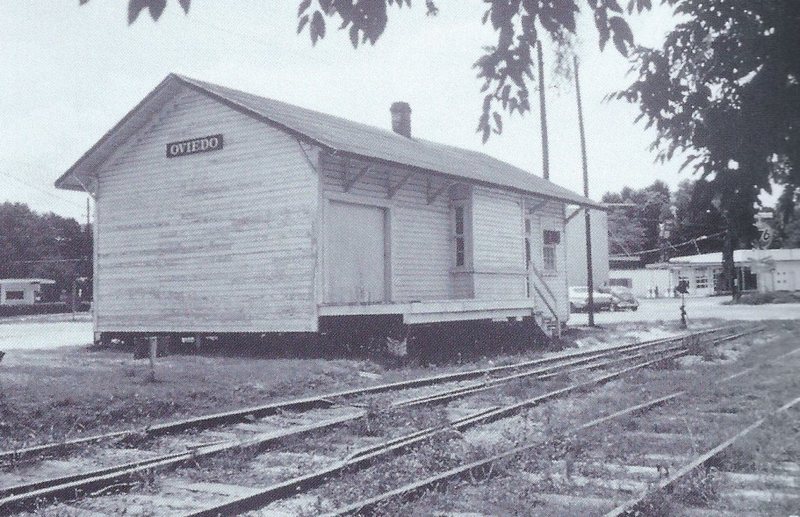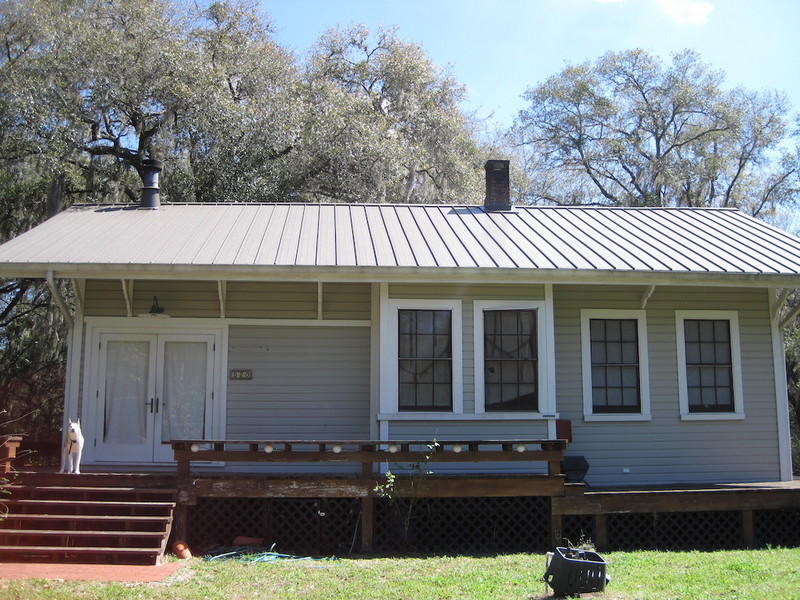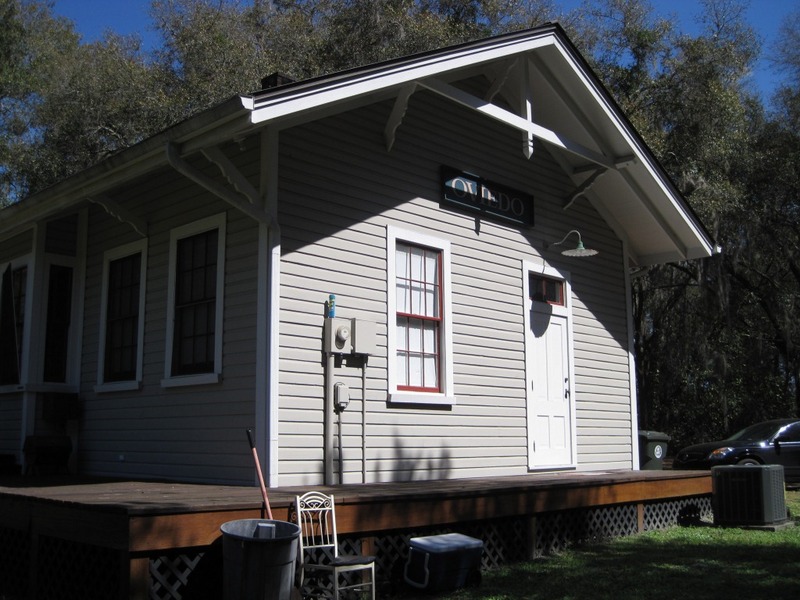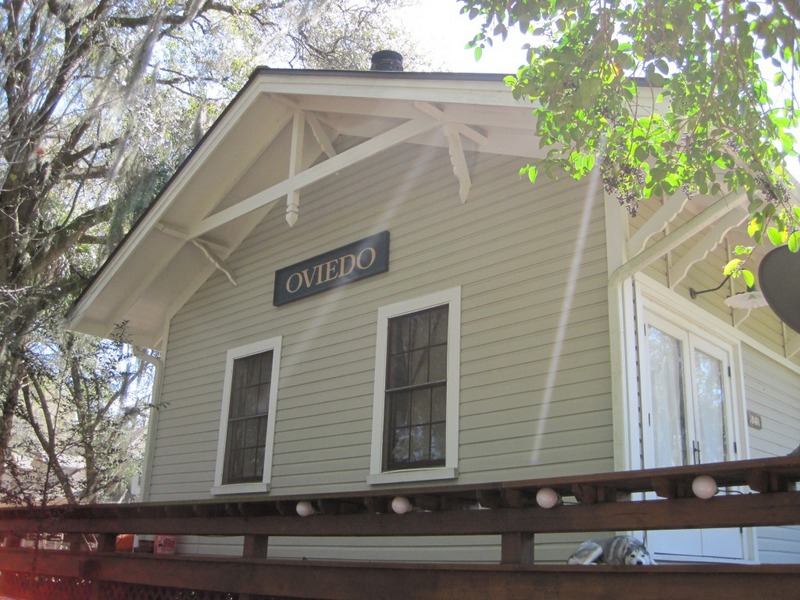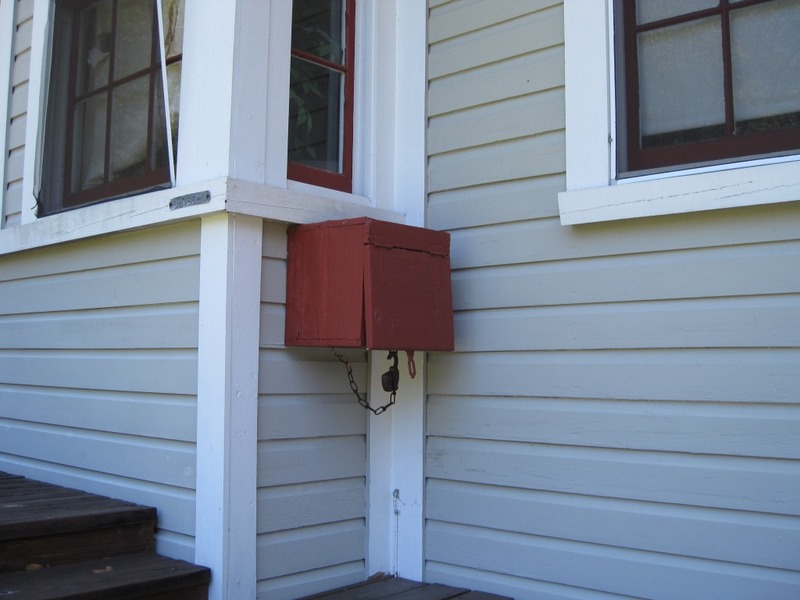The Oviedo Depot
Built by the South Florida Railroad in 1887, the Oviedo Depot was part of the Plant System, which was a system of railroads, steamships and hotels that operated from 1860 to 1902 in South, Central, and Coastal Georgia with lines extending down into Port Tampa and Punta Gorda, Florida. The original line was the Savannah, Florida and Western (SF&W) Railway, which ran a 1,721-mile network that served as the main component of the Plant System.[1] The system was named after its owner and president, railroad developer Henry Bradley Plant (1819-1899). Plant City, located near Tampa, was also named after Plant. In 1883, the Plant System purchased 60 percent of the stock of the South Florida Railroad, which ran from Sanford to Tampa.[2] The South Florida Railroad was the first to reach Tampa, allowing it to obtain the best ports. The Plant Steamship Line operated services out of Port Tampa all the way to Key West, Havana, Mobile, Fort Meyers, Jacksonville, and the maritime provinces of Canada.[3] The Plant System railroads were all physically connected, covering the Central Florida region. All of the lines were built during the 1880s and 1890s. The Plant System was purchased by the Atlantic Coast Line Railroad Company (ACL)in 1902.[4] Further line extension projects would expand the system to its greatest extent by 1929. ACL merged with Seaboard Air Line Railroad (SAL) on July 1, 1967.[5]
Oviedo was known as Solaria’s Wharf or the Lake Jessup Community prior to March 13, 1879, when postmaster Andew Aulin, Sr. (1843-1918) named the new post office and surrounding town.[6] When the depot was built in 1887, the community numbered around 50 residents. When Oviedo was incorporated in 1925, the population had risen to 800.[7] Known for citrus and celery production, the area became home to companies such as the Nelson and Company Packing Plant, which would ship the goods on the Oviedo Plant Line.[8] In 1894 and 1895, a severe freeze bankrupted many citrus farmers, forcing them to grow celery instead.[9] Soon thereafter, 20 percent of the nation’s celery was produced within 30 square miles of Orlando, predominantly in Sanford and Oviedo.[10] Celery production remained synonymous with the region for several decades, until the Florida Technical University (FTU), which would later become the University of Central Florida (UCF), broke ground, increasing property values in Oviedo and sending growers further south to richer soil.
The Oviedo Depot was based on the design standards set by the Plant System. This standardized system for the Florida lines consisted of three depot styles based on the population of the town or city that it serviced.[11] Smaller towns, such as Oviedo, would have a wooden depot design, as opposed to the larger cities that had brick depots. In addition to the depot, there was a red storage warehouse for produce and a water tank for the train engines.
The depot was the first to have a telegrapher. Citizens could either leave their messages in a box on the outside of the building to be telegraphed later or could hand the message directly to the telegrapher during operating hours. The roof of the depot was used as a guide for patrolling planes that flew out of Sanford Airport during World War II.[12]
[1] Michael Mulligan, Railroad Depots of Central Florida (Charleston, SC: Arcadia Publishing, 2008), 9.
[2] Gregg M. Turner, A Journey into Florida Railroad History (Gainesville: University Press of Florida, 2008), 124-126.; Gregg M. Turner and Seth H. Bramson, The Plant System of Railroads, Steamships and Hotels (Laurys Station, PA: Garrigues House, Publishers, 2004): 47.
[3] Turner, A Journey into Florida Railroad History, 126.
[4] Mulligan, Railroad Depots of Central Florida, 9.
[5] Ibid.
[6] "History of Oviedo," City of Oviedo, accessed November 18, 2015, http://www.cityofoviedo.net/node/68.
[7] Mulligan, Railroad Depots of Central Florida, 42.
[8] Turner, A Journey into Florida Railroad History, 58; Steve Rajtar, "Oviedo Historical Trail," Steve Rajtar, accessed November 23, 2015, http://www.geocities.ws/krdvry/hikeplans/oviedo/planoviedo.html.
[9] Donna Neely, "Oviedo Began as Solaria’s Wharf," RICHES of Central Florida, accessed November 23, 2015, https://richesmi.cah.ucf.edu/omeka2/items/show/5703.
[10] Elaine Bennett, "Oviedo Farm Clings To Its Celery Roots," The Orlando Sentinel, March 25, 1990, accessed November 23, 2015, http://articles.orlandosentinel.com/1990-03-25/news/9003243063_1_celery-plants-oviedo-harvesting.
[11] Eric Smalls, "Oviedo Train Depot," RICHES of Central Florida, accessed November 19, 2015, https://richesmi.cah.ucf.edu/omeka2/items/show/5100.
[12] Ibid.
[13] Ibid.
